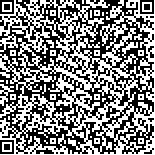| 摘要: |
| [摘要] 目的 探讨系统免疫炎症指数(SII)与结直肠癌(CRC)患者术后复发的关联性。方法 回顾性收集2016年1月至2020年6月在该院接受术后化疗的118例CRC患者的临床资料,其中男65例,女53例;年龄27~82(61.4±11.4)岁;结肠癌69例,直肠癌49例。采用Cox回归模型探讨影响患者术后复发的因素。采用ROC曲线法分析SII预测患者术后复发的效能,并根据截断值将研究对象分为高SII组(SII≥655.68×109/L,n=54)和低SII组(SII<655.68×109/L,n=64),比较两组的临床特征。采用生存分析探讨两组无复发生存(RFS)时间的差异。结果 Cox回归分析结果显示,较高的SII和CA19-9水平是影响CRC患者术后RFS的独立危险因素(P<0.05)。ROC曲线分析结果显示,SII预测术后复发的截断值为655.68×109/L,其对应的灵敏度为76.67%,特异度为86.21%,具有预测价值(AUC=0.855,P=0.000)。高SII组Ki-67≥60%、CA19-9>39 ng/ml的人数比例显著大于低SII组(P<0.05),且白细胞(WBC)、中性粒细胞(NEU)、单核细胞(MON)、血小板(PLT)水平高于低SII组,而淋巴细胞(LYM)水平显著低于低SII组(P<0.05)。高SII组的中位RFS时间为5.6个月(95%CI:5.1~6.1),低SII组的中位RFS时间为8.3个月(95%CI:7.6~9.0),两组差异有显著统计学意义(log-rank检验: χ2=29.330,P=0.000)。结论 SII可用于CRC患者术后RFS时间的评估,临床医师应对高SII值患者予以更多的关注,以尽早发现复发情况并采取相应的干预治疗。 |
| 关键词: 系统免疫炎症指数 结直肠癌 术后 无复发生存时间 |
| DOI:10.3969/j.issn.1674-3806.2021.08.11 |
| 分类号:R 735.3 |
| 基金项目:江苏省无锡市科协软科学研究重点A类课题(编号:KX-20-A21) |
|
| A study on the relationship between systemic immune inflammatory index and postoperative recurrence of colorectal cancer patients |
|
HU Shi-qi, PAN De-jian
|
|
Wuxi Clinical College, Anhui Medical University, Jiangsu 214044, China
|
| Abstract: |
| [Abstract] Objective To investigate the relationship between systemic immune inflammatory index(SII) and postoperative recurrence of colorectal cancer(CRC) patients. Methods The clinical data of 118 CRC patients who received postoperative chemotherapy in our hospital from January 2016 to June 2020 were retrospectively collected, including 65 males and 53 females. The patients were 27-82 years old, with an average of (61.4±11.4)years, including 69 cases of colon cancer and 49 cases of rectal cancer. Cox regression model was used to explore the factors affecting the patients′ postoperative recurrence. The receiver operator characteristic(ROC) curve method was used to analyze the efficacy of SII in predicting the patients′ postoperative recurrence, and the study subjects were divided into high SII group(SII≥655.68×109/L, n=54) and low SII group(SII<655.68×109/L, n=64) according to their different cut-off values. The clinical characteristics were compared between the two groups, and the difference in relapse-free survival(RFS) time between the two groups was explored by using survival analysis. Results The results of Cox regression analysis showed that higher levels of SII and CA19-9 were the independent risk factors affecting the CRC patients′ postoperative RFS time(P<0.05). The results of ROC curve analysis showed that the cut-off value of SII in predicting postoperative recurrence was 655.68×109/L, whose corresponding sensitivity and specificity were 76.67% and 86.21%, respectively. SII had the value of predicting postoperative recurrence of colorectal cancer patients(AUC=0.855, P=0.000). The proportion of the patients with Ki-67≥60% and CA19-9>39 ng/ml in the high SII group was significantly greater than that in the low SII group(P<0.05). The levels of white blood cell(WBC), neutrophil(NEU), monocyte(MON), and platelet(PLT) in the high SII group were significantly higher than those in the low SII group, and the level of lymphocyte(LYM) in the high SII group was significantly lower than that in the low SII group(P<0.05). The median RFS time was 5.6 months(95%CI: 5.1-6.1) in the high SII group, and 8.3 months(95%CI: 7.6-9.0) in the low SII group, with a significant difference between the two groups(log-rank test: χ2=29.330, P=0.000). Conclusion SII can be used for the assessment of postoperative RFS time in CRC patients. Clinicians should pay more attention to the patients with high SII values in order to detect the recurrence as soon as possible and take the appropriate interventions. |
| Key words: Systemic immune inflammatory index(SII) Colorectal cancer(CRC) Postoperation Relapse-free survival(RFS) time |

